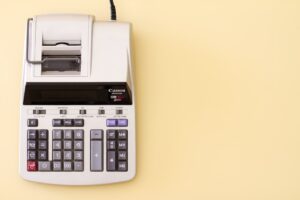The forex market is one of the most liquid and actively traded markets in the world, with trillions of dollars being exchanged every day. As a forex trader, it is crucial to have the right tools and indicators to help you make informed trading decisions. One such tool is the moving average indicator, which is widely used by traders to identify trends and potential entry and exit points.
A moving average is a simple mathematical calculation that is used to analyze historical data points and smooth out price fluctuations over a specified period of time. It is called a moving average because it constantly updates itself by dropping the oldest data point and adding the most recent one. This helps to provide a more accurate representation of the average price over a given time frame.
There are several types of moving averages that traders commonly use, including the simple moving average (SMA), exponential moving average (EMA), weighted moving average (WMA), and displaced moving average (DMA). Each type has its own characteristics and is suited for different trading styles.
The simple moving average (SMA) is the most basic and commonly used moving average indicator. It calculates the average price of a currency pair over a specific number of periods and plots a line on the chart. The SMA is useful for identifying long-term trends and support and resistance levels. It is easy to understand and interpret, making it suitable for beginner traders.
The exponential moving average (EMA) is similar to the SMA but gives more weight to recent data points. It is more responsive to price changes and can help traders identify short-term trends and potential entry and exit points. The EMA is favored by traders who are looking for more timely and accurate signals.
The weighted moving average (WMA) assigns different weights to each data point, giving more weight to recent prices. It is similar to the EMA but is less commonly used by forex traders. The WMA is more sensitive to price changes than the SMA but less responsive than the EMA.
The displaced moving average (DMA) is a variation of the SMA that is shifted forward or backward in time. It helps traders identify potential support and resistance levels and can be used to confirm trend reversals. The DMA is useful for traders who want to see how the moving average would have looked in the past.
When choosing the right moving average forex indicator for your trading style, it is important to consider your time frame and trading objectives. If you are a long-term trader who wants to identify major trends, the SMA or DMA may be more suitable. If you prefer short-term trading and want more timely signals, the EMA may be a better choice.
Additionally, consider the volatility of the currency pair you are trading. If the pair is highly volatile, a shorter-term moving average may be more effective in capturing price movements. Conversely, if the pair is less volatile, a longer-term moving average may be more appropriate.
It is also important to test different moving average indicators on historical data and in a demo trading account before using them in live trading. This will help you understand how each indicator performs under different market conditions and determine which one works best for your trading style.
In conclusion, the moving average forex indicator is a powerful tool that can help traders identify trends, support and resistance levels, and potential entry and exit points. There are several types of moving averages to choose from, each with its own characteristics and suited for different trading styles. Consider your time frame, trading objectives, and the volatility of the currency pair you are trading when choosing the right moving average indicator for your forex trading. Remember to test different indicators before using them in live trading to ensure their effectiveness.













